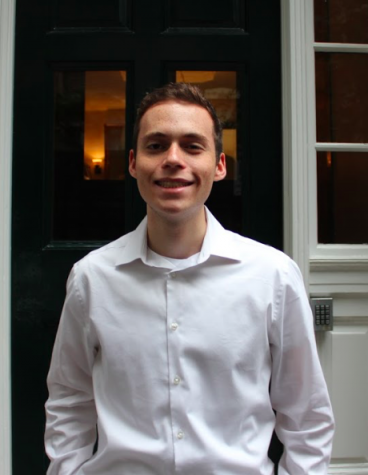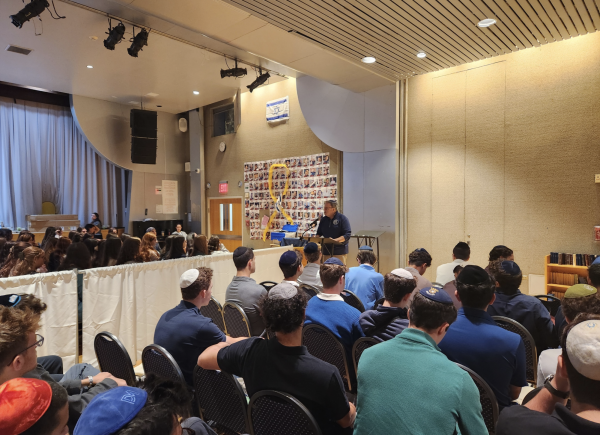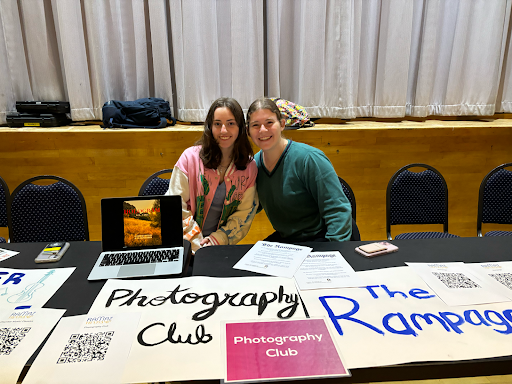Hitlahavut: Ramaz’s Best Kept Secret

Did you know that your peers are writing novels? Conducting research? Composing music? Well, if you didn’t, you are not alone. Out of 60 respondents, 39 students agreed that he or she was not aware what the Hitlahavut Scholars program was before opening the poll on Schoology. For a school that loves to advertise just about everything at the Open House, Annual Dinner, and other events, as well as on Facebook, Instagram, and the like, it is very surprising that Ramaz does not shine a brighter light on one of its most impressive programs.
“Hitlahavut” is the Hebrew word for “passion” or “enthusiasm,” and the eponymous program enables Ramaz students to explore just that: something that they love. It allows students working with a mentor to take on a large project in any specific field of interest, ranging from Arabic and Performing Arts to Talmud and Computer Science, in order to deepen their knowledge in that area. Students have, for example, written papers about the mathematics of basketball, analyzed the history of the purpose of art, conducted cancer research on rodents, written and performed their own music, studied the histories of Jews from different countries within their New York community, and even created a museum tour of the MET on Biblical art. Rachel Shohet ’20, who “reads a perek of Navi or Ketuvim a day, summarizes it, and relates it to another story in Tanach” for her Hitlahavut project, has finished 16 Sefarim within Neviim and Ketuvim and explained that “this project has given me the chance to grow intellectually, especially when it comes to Tanach.”
Students also have the opportunity to work with extremely talented mentors. On applying to the program, each student must select a mentor with whom to work on the program. Mentors guide the student through the project and check on the student’s progress throughout the multi-year program. Most of the mentors are Ramaz faculty members, though some students work with members outside of Ramaz when necessary. Ms. Litwack, who served as a mentor for students in the past, said, “The most exciting thing is when the student is very involved and he or she can develop a rapport or an intellectual comradery around the project.”
The program was designed by the former Ramaz Upper School administration in 2009 as a scholarship program for incoming students. It originally served as a selling point for the Upper School, attracting Jewish students that may have been considering public school or other Yeshivot where they thought they could have better developed their specific interests. In addition to applying to Ramaz, a student could apply to the prestigious Hitlahavut program with a specific interest, and if accepted, would receive a scholarship of approximately $7500 on the condition that the student completed his or her desired project throughout high school.
Over the last ten years, the Hitlahavut program has undergone significant changes. Originally, Dr. Jucovy and a teacher who is no longer at Ramaz ran the program, but he currently co-runs it with Ms. Litwack. As the years progressed, the value of the scholarship offered to students decreased, and a few years later, the scholarship was dropped entirely. “This was done mostly because there was a solid demonstration that it wasn’t making much of a difference as a selling point,” explained Dr. Jucovy. Also, explained Ms. Litwack, “Some people engaged in their projects very seriously, while others did not, so as a mentor I found it very difficult to constantly remind the student and manage the process. I would also send letters to students who might have had their scholarships rescinded for lack of involvement in the program, which was very hard both as a mentor and as a coordinator. I am glad that Hitlahavut is no longer scholarship-based.”
Additionally, the program is no longer available to eighth-grade prospective students, but to rising sophomores and juniors who apply at the end of their freshman or sophomore years. This change was made due to the realization that some students take longer to fully develop their interests. “Students in eighth-grade don’t necessarily know what their real passions are at that point as they are still at a developing stage,” said Dr. Jucovy. “Also, by starting the program at the beginning of high school you are going to miss out on students that might develop their passions a little bit later. You can’t make an accurate determination whether this child is actually a prodigy in some area at that point.”
Until last year, to be eligible to apply to the program, a student was required to have a combined GPA of 3.8 or higher in Judaic and general studies. The administration implemented this most recent change of dismissing the GPA requirement as to ensure that all students who may have specialized interests are included the program. “All students are different,” explained Ms. Litwack. “Maybe a student’s academics aren’t very strong, but is still very strong at theater, for example, and would qualify as a Hitlahavut scholar. It would be punitive not to allow this individual to join, and an acceptance to the program would only give the possibly less-motivated student a boost of confidence.” While the program is now open to more students, it remains selective, onboarding approximately 20 students in total across three grades.
Participation in the Hitlahavut program requires a massive time commitment from the student participants. Given that the students complete their projects independently, it is up to the students to find the time to work on them and check in with their mentors. Students are also required to complete progress reports every few months. However, other than a few periodical posts on Schoology, the scholar does not hear from the coordinators about Hitlahavut at any point during the year and is forced to spend as much or as little time on the project managed by the student him or herself. For some students, this time commitment is too much to handle. Daniella Feingold ’20, who worked on “designing an app that would translate any photo of text into a typed, editable document,” joined Hitlahavut, but left the program in her junior year because she decided to focus her time elsewhere. Feingold explained, “In the future, I’d like to restart the project, but I think it was the right decision for now.”
The program has also become a secret kept within the participants, leaving other students to ask, “What’s Hitlahavut?” on the rare occasion that it enters a discussion.
Ms. Litwack speculates that this lack of knowledge stems from the timing that the email with application information is sent out. Ms. Chechik sends the email to freshman and sophomores at the very end of the year, when students are already in “summer mode” and many those who don’t apply either disregard the email entirely or forget about it by the start of the year when scholars begin their projects.
Dr. Jucovy reasons that the lack of common knowledge is a result of the original intentions of the program. “When the administration first introduced Hitlahavut as a scholarship program for incoming freshman, they likely did not advertise the program within Ramaz as to not create a cohort among the members of the program inspiring a less congenial environment for those not accepted.” Also, the current admissions team does not advertise the program to the same extent now that the scholarship is no longer available. Not only that, but scholars present their work at a end-of-year luncheon open only to those in the Hitlahavut program. Ms. Litwack and Dr. Jucovy speculate that perhaps as Hitlahavut is, as the year-end information email describes it to be, a project “that goes beyond the regular class and co-curricular experiences,” the current Ramaz administration has not felt the need to popularize it among the entire student body.
Now that the program is no longer scholarship based, there is no reason for Ramaz not to show off a project where students are delving deep into a specific field in which they are passionate and utilizing the school’s resources to create something that they love. This program is part of what makes Ramaz a special institution. Both Dr. Jucovy and Ms. Litwack agree that a critical goal for the future of the Hitlahavut program is to publicize it for the entire school. Dr. Jucovy suggested dedicating a B4 or AM Assembly period every year for some students in the Hitlahavut program to present their work to the entire school, rather than only at the annual luncheon for Hitlahavut scholars and their mentors. “We have to give the projects some more kavod – so few people see what the projects are really about,” said Ms. Litwack. “The luncheon is always incredibly interesting, and we should share this with all of the students.”
Similarly, the admissions team should make use of this amazing program and share this facet of Ramaz with prospective parents and students. Both teachers affirmed that there is tremendous potential for integrating this program into the larger culture of Ramaz, one where students work hard on completing projects that they wholeheartedly love to do and enjoy, having Hitlahavut springboard their passions into the future.

Zach Buller has been an active member of The Rampage staff since the first week of his freshman year, and now serves as Co-Editor-in-Chief. In his four...


